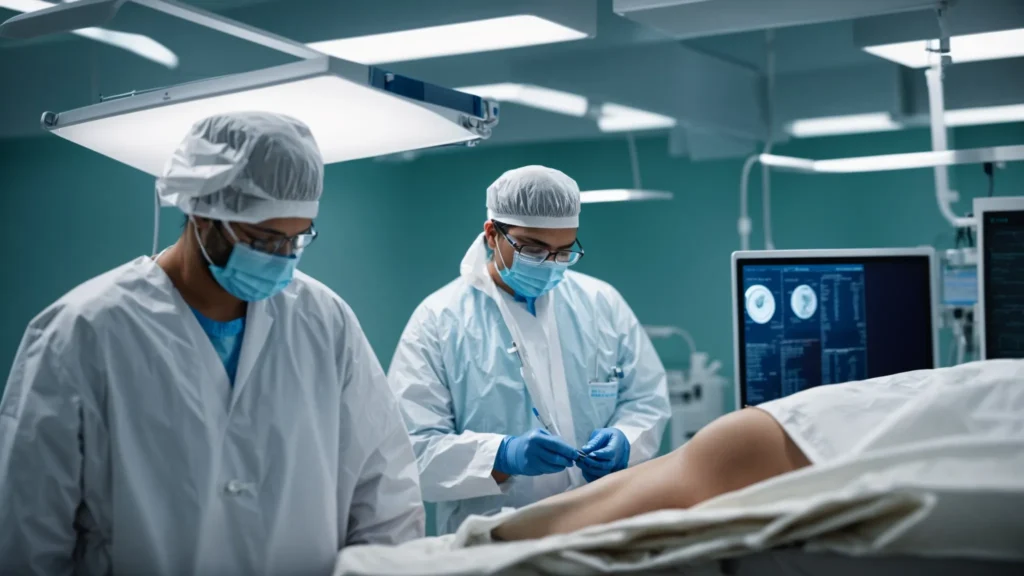What Is a Tenaculum? Understanding Its Role in Surgical Procedures
In the world of surgical instruments, a tenaculum plays a pivotal role in various medical procedures. Surgeons and gynecologists commonly utilize this instrument to hold and stabilize tissues such as the cervix or fibrous structures within the body. Professionals need to have a clear understanding of the tenaculum’s purpose to use it effectively during surgery. In this article, we will delve into the specifics of this vital tool, from its design to its application in the medical field.
The Design and Functionality of a Tenaculum in Medical Procedures
The intricacies of a tenaculum’s design are key to its functionality. It is typically crafted from high-grade stainless steel, which ensures its strength and durability. The arms of the tenaculum are crafted to provide an ergonomic grip, allowing for extended use without physician fatigue.
The sharp, hook-like tips of the tenaculum are meticulously designed to provide maximum traction on the tissue. This precision prevents unnecessary damage to the tissue while allowing for a secure grasp. The tips may vary slightly in shape and size to accommodate different procedural needs and tissue types.
Additionally, the tenaculum is built with a locking mechanism. This feature enables the instrument to hold tissues in place during a procedure, effectively freeing up the surgeon’s hands for other tasks. The locking mechanism is adjustable, which further adds to the tool’s versatility in handling tissues with varying thicknesses and densities.
Moreover, the tenaculum’s functionality extends beyond its role in stabilizing tissue; it can also be used in diagnostic procedures as a means to gently pull or position tissues to provide better access or visualization for the surgeon or diagnostician. This dual capability is what makes a tenaculum an indispensable instrument in the medical field.
Different Types of Tenacula and Their Specific Uses
While the tenaculum is typically thought of as a standard tool, there are actually several variations that cater to specific surgical needs. The traditional tenaculum features elongated, slender arms with sharp, curved hooks, suited for general use. However, there are specialized designs intended for particular medical applications.
One variation is the tenaculum forceps, which is commonly used in gynecological procedures to provide a clear surgical field by grasping the cervix. Some tenacula come with broader, sturdier tips that are suitable for handling heavier or more fibrous tissues, such as those found in orthopedic surgeries.
Research and development in surgical tools continue to bring innovations to the design of tenacula. Some are now available with non-conductive coatings that allow for their safe use in procedures involving electrosurgery, enhancing the scope of where and how a tenaculum can be employed.
The Crucial Role of a Tenaculum in Gynecological Surgeries
In gynecological surgeries, a tenaculum is indispensable. It is essential for procedures such as cervical biopsies, where stabilizing the cervix is of paramount importance to ensure an accurate sample is taken. The tenaculum’s ability to provide a clear surgical field by steadying tissues allows for better visualization and access, which in turn leads to improved outcomes.
Its usage plays a significant role in fertility treatments and diagnostic tests as well. For instance, in the placement of intrauterine devices (IUDs), the tenaculum aids in aligning the uterus, enabling a precise and smooth insertion. Without such steadying, the risk of dislocation or improper placement of the device could increase, potentially leading to complications.
Gynecologists emphasize the value of the tenaculum in training and practice, signifying its importance as a primary instrument in the discipline. Even in routine examinations, such as pap smears, a tenaculum may be used to gain a better angle of the cervix, leading to more thorough and successful examinations.
Altogether, the tenaculum proves to be a handy and multifaceted tool in the surgeon’s arsenal. Its precise design and application in a wide array of medical procedures underpin its status as a fundamental instrument in both the operating theater and the examination room.

